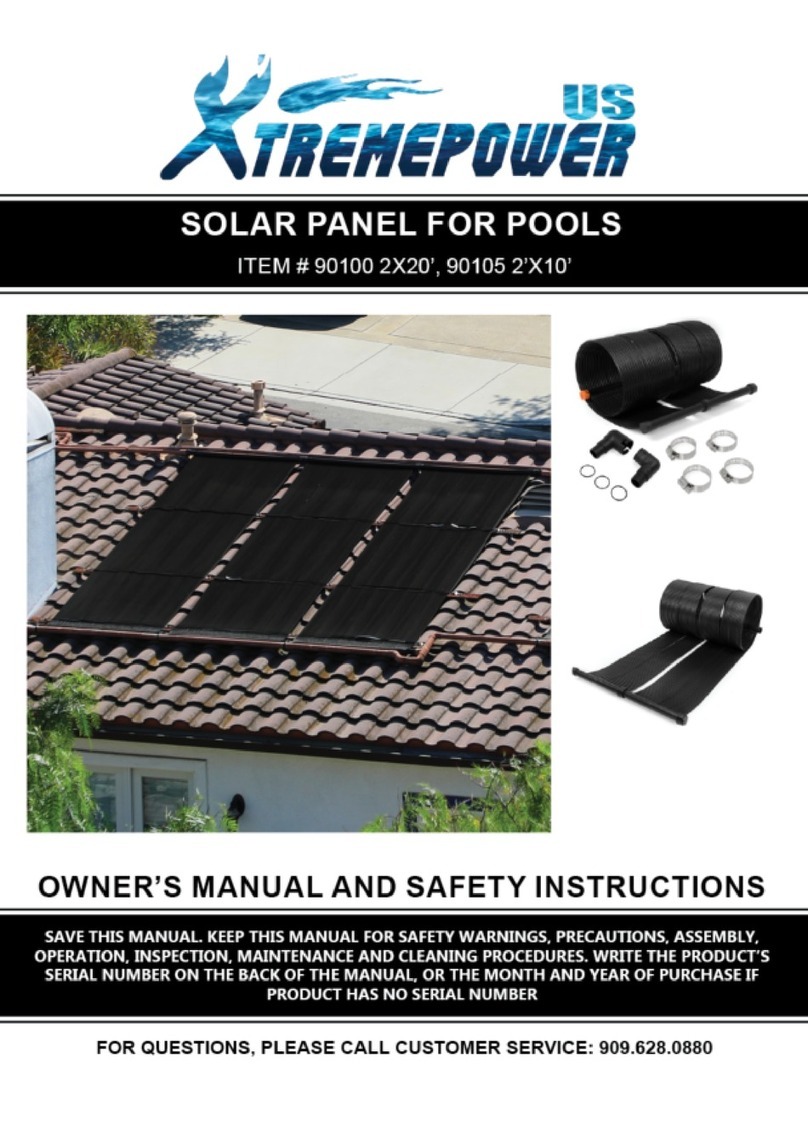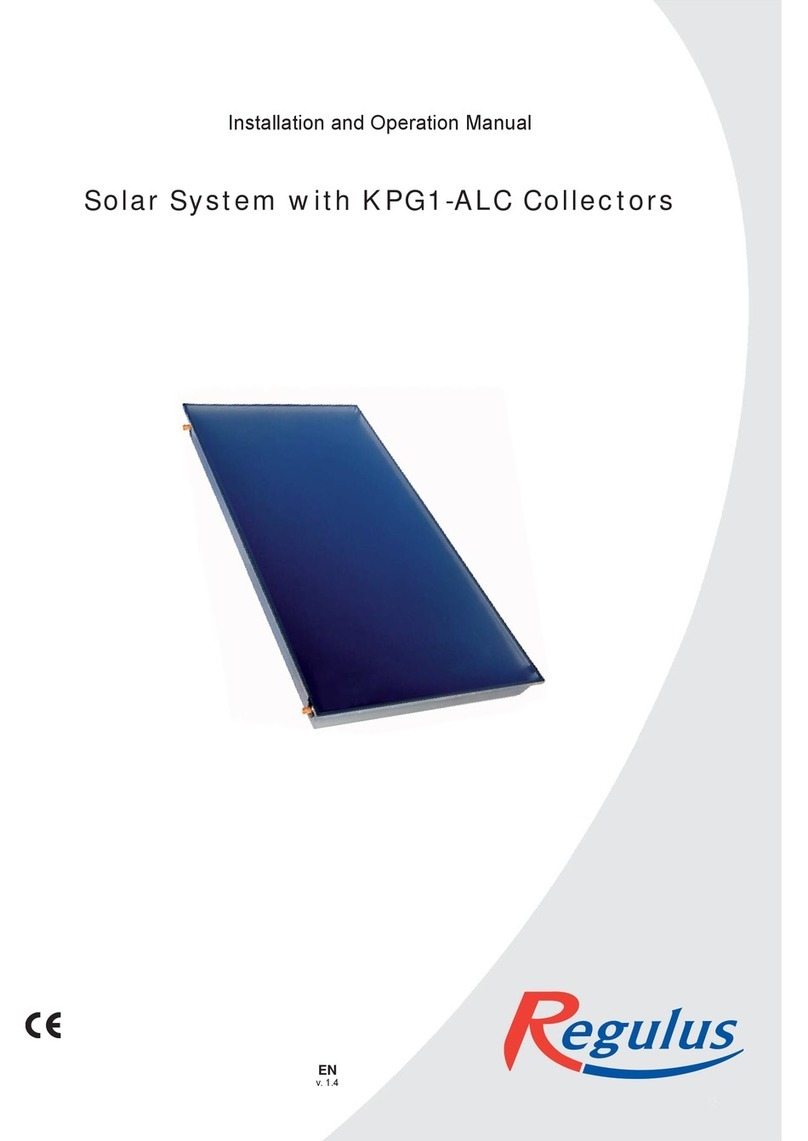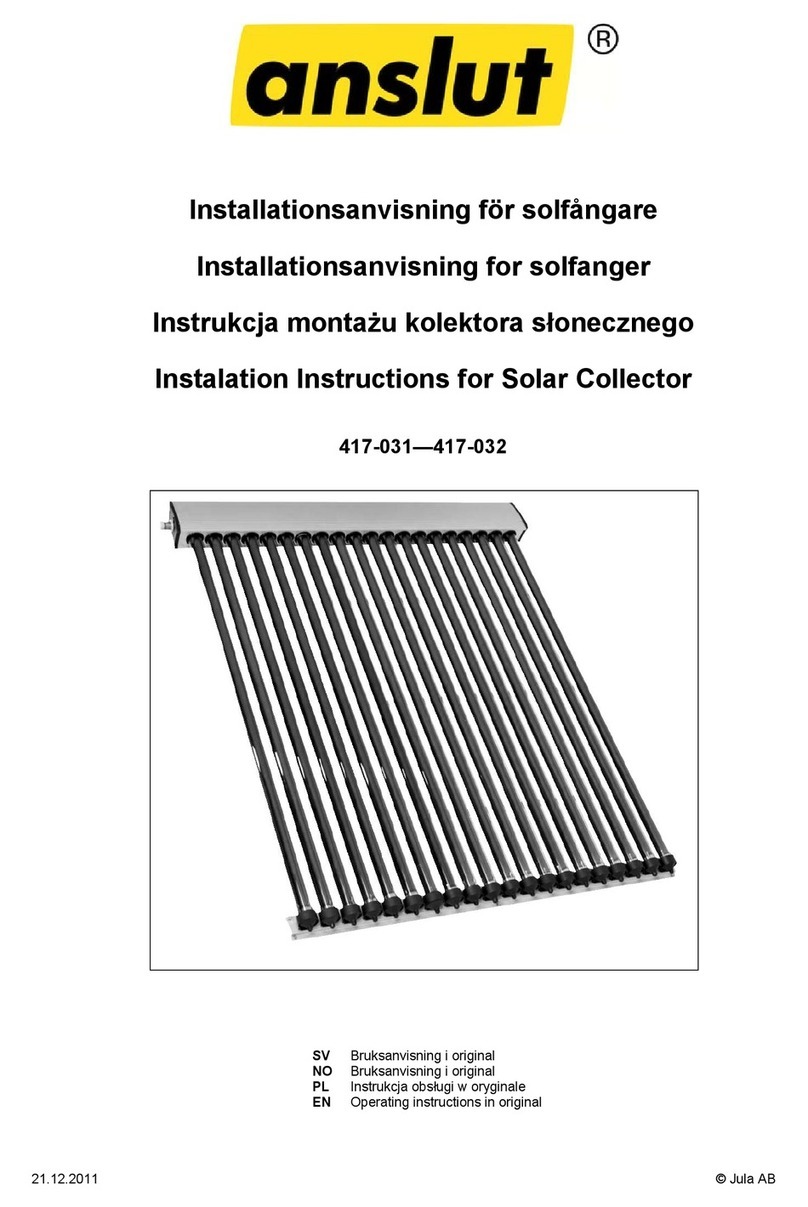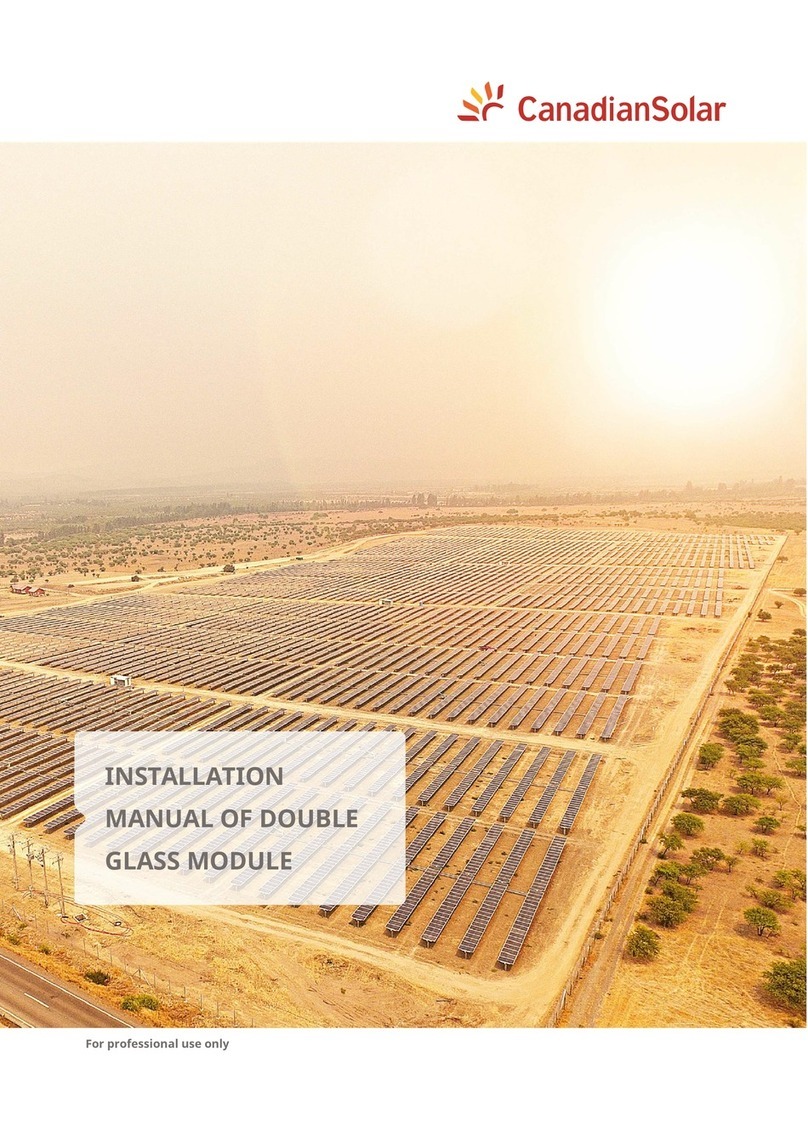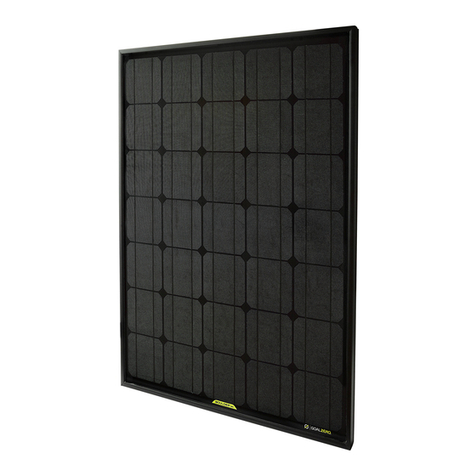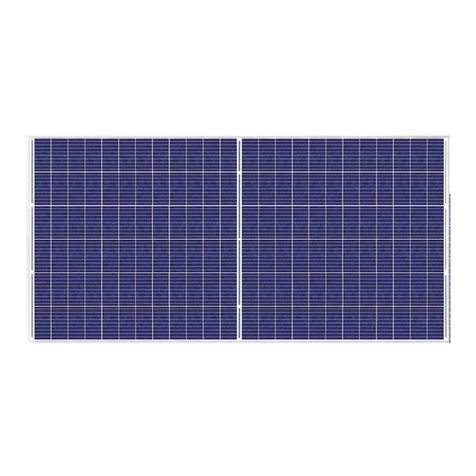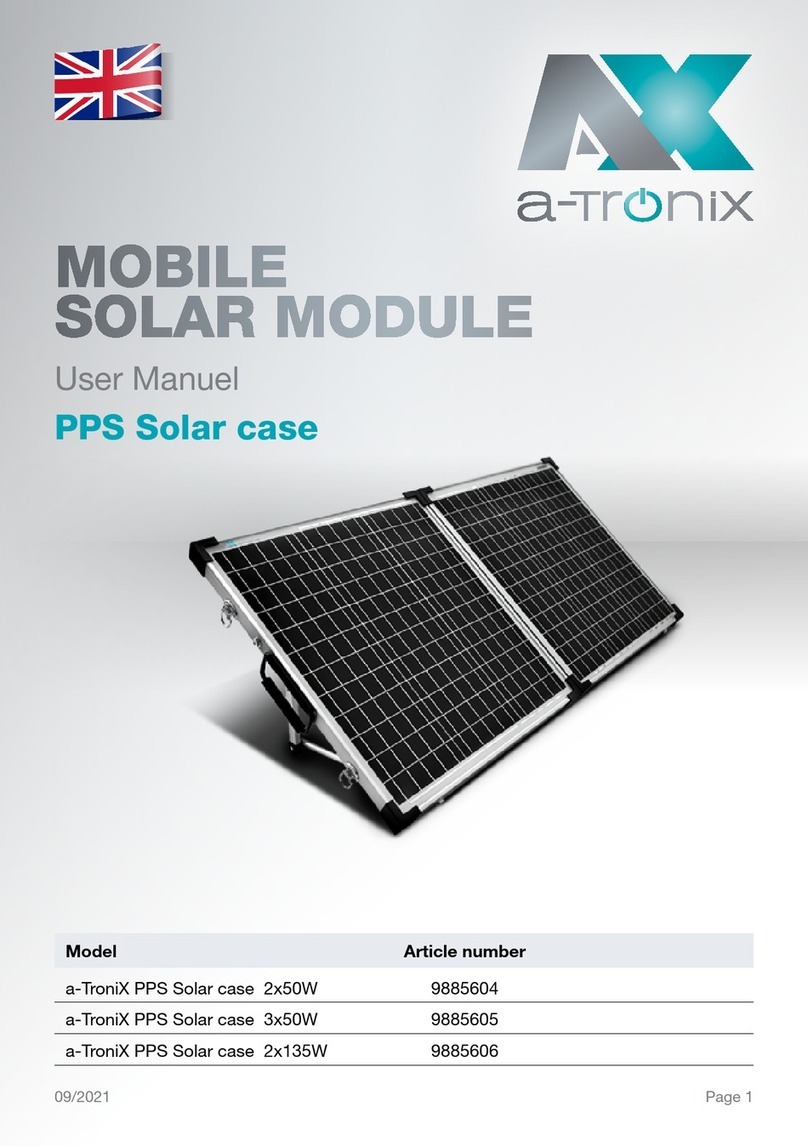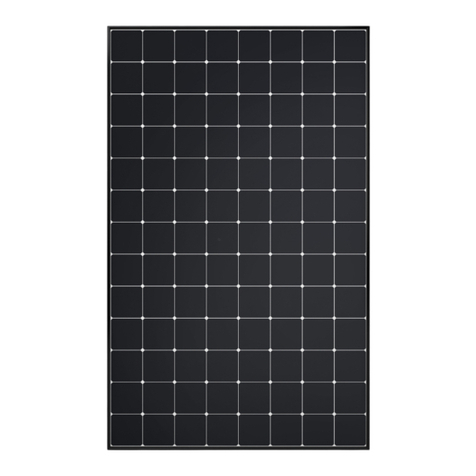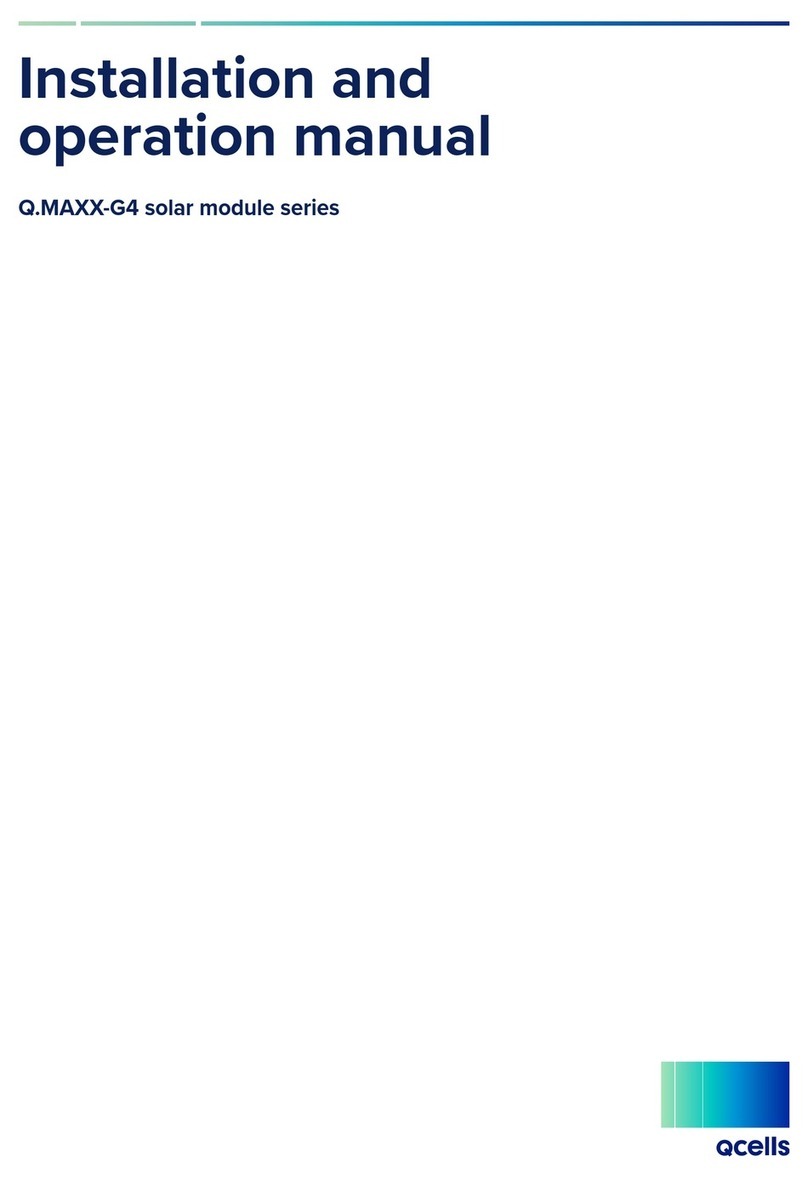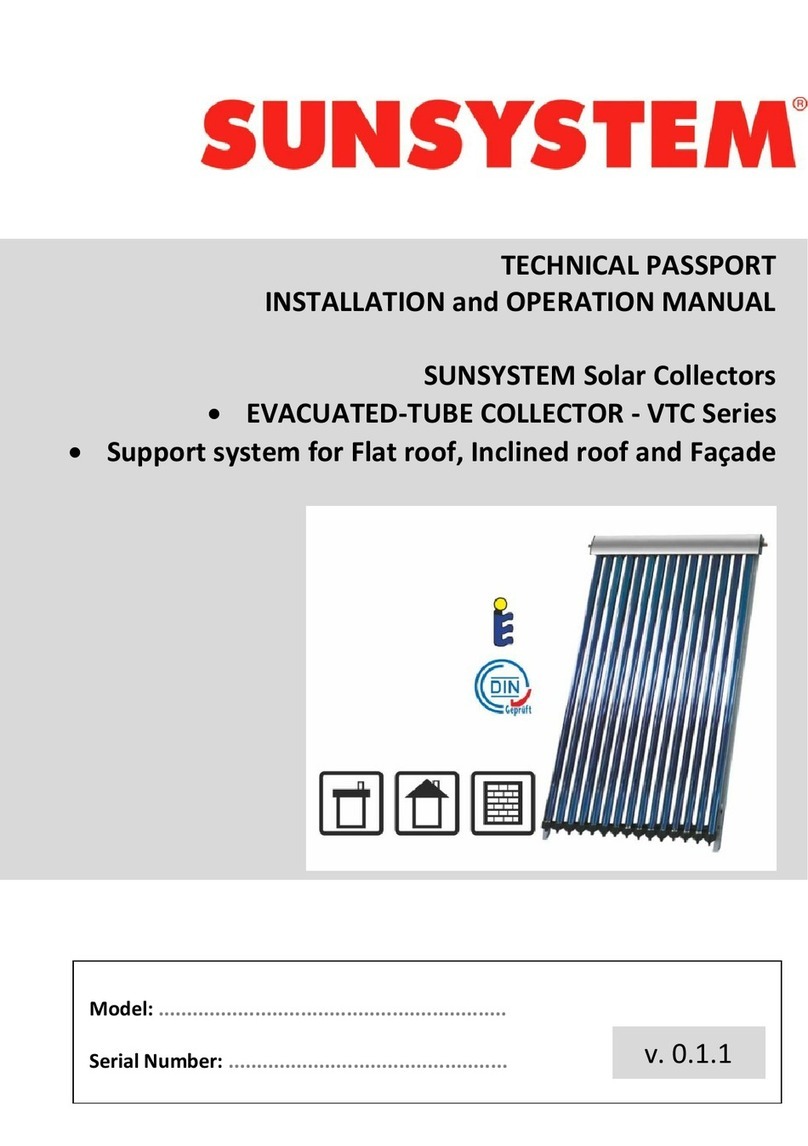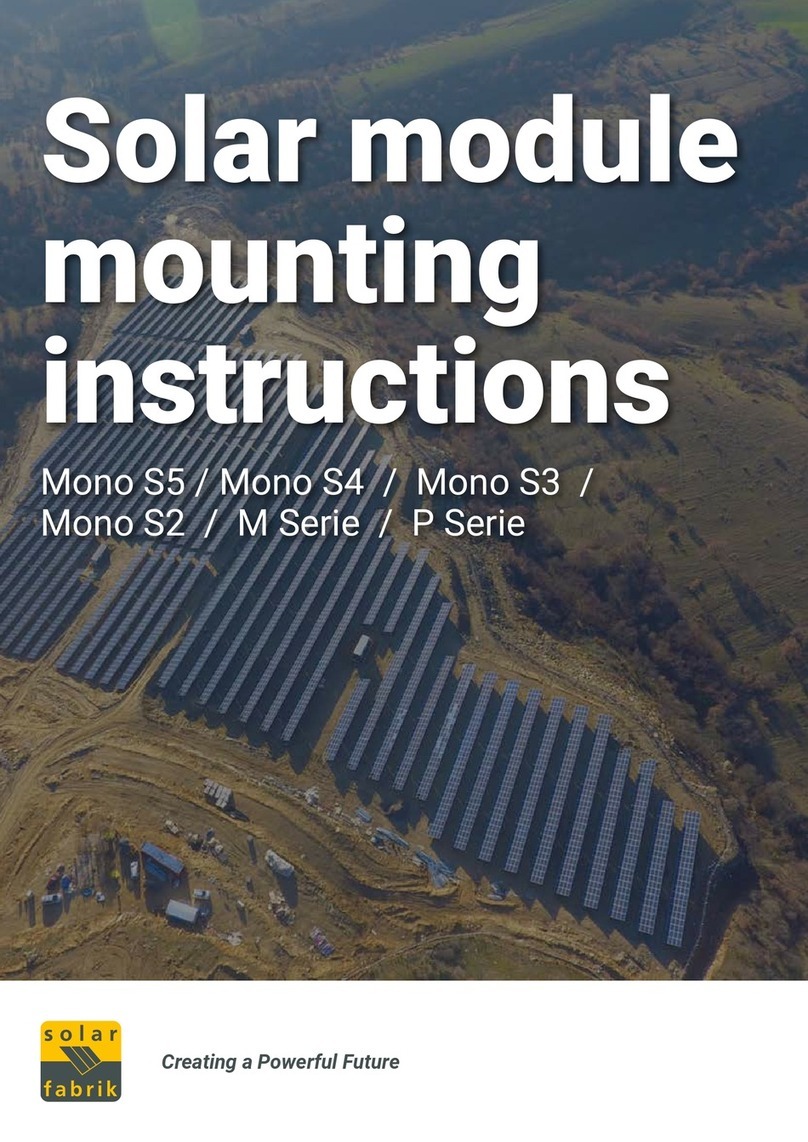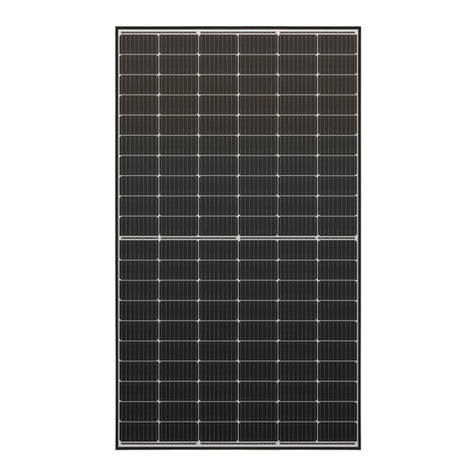GENERAL SAFETY
■Installing PV modules and ground frames
should be in accordance with applicable
rules and regulations.
■Only installer/service personnel should
have access to the PV module installati-
on site. In order to avoid a risk of injury
or electrical shock, do not allow anyone
to approach the PV module if the person
has little knowledge on PV module or on
the measures that should be taken when
PV modules are damaged.
■No matter where the PV modules are
installed, either roof mounted constructi-
on or any other type of structures above
the ground, appropriate safety practices
should be followed and required safe-
ty equipment should be used in order to
avoid possible safety hazards. Note that
the installation of some PV modules on
roofs may require the addition of repro-
ong, depending on local building/re
codes.
■In the case that the PV modules are
non-integral type, the module is to be
mounted over a re resistant roof.
■Follow all safety precautions of other
components used in the system.
■Do not clean the glass surface with che-
micals. Do not let water stay on the glass
surface of PV modules for a long time.
This creates a risk of white eorescence
(glass disease) which may result in the
deterioration of energy generation.
■Do not install the PV module horizontally.
It may cause dirt or white eorescence
(glass disease) due to water.
■Do not cover the water drain holes of the
frame. There is a risk of frost damage
when the frame is lled with water.
■When sliding snow load has to be consi-
dered, an appropriate measure has to be
taken so that PV module frames on lower
edge of PV modules will not be damaged.
■In case the glass surface of a PV modu-
le is broken, wear goggles and tape the
glass to keep the broken pieces in place.
ELECTRICAL SAFETY
■Contact with electrically active parts of a
PV module such as terminals can result
in burns, sparks and lethal shock whether
the PV modules is connected or not.
■PV modules produce electricity when the
sunlight or other sources illuminate the
module surface. When the modules are
connected in series, voltage is cumulati-
ve. When the modules are connected in
parallel, current is cumulative.As a result,
a large-scale PV system can produce
high voltage and current which could pre-
sent an increased hazard and may cause
serious injury or death.
■Do not connect the PV modules directly to
the loads since the variation of the output
power depending on the solar irradiation
causes damage for the connected load.
■Turn o inverters and circuit breakers
immediately, should a problem occur.
■A defective PV module may generate po-
wer even if it is removed from the system.
It may be dangerous to handle the PV
module while exposed to sunlight. Place
a defective PV module in a carton after
PV cells are completely shaded.
■Do not expose PV module to sunlight con-
centrated with mirrors, lenses or similar
means.
■Do not shade portions of the PV module
surface from the sunlight for a long time.
The shaded cell may become hot (hot
spot phenomenon) which results in solder
joints peeling o.
■In case of series connection, the maxi-
mum open circuit voltage must not be
greater than the specied maximum sys-
tem voltage. The voltage is proportional to
the number of series. In case of parallel
connection, please be sure to take proper
measure (e.g. fuse for protection of mo-
dule and cable from over current, and/or
blocking diode for prevention of unbalan-
ced strings voltage) to block the reverse
current ow. The current may easily ow
in a reverse direction.















